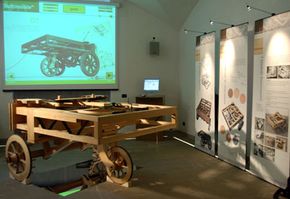The term Renaissance man is used to describe a person who seems to know, and know how to do, nearly everything. He or she is skilled in multiple disciplines, and, being well-educated, has a broad knowledge of all sorts of subjects. When someone refers to another as a Renaissance man, you know that person really has his or her stuff together and would most likely be a great addition to your trivia team. A polymath is another word used to describe such a person; the word comes from Greek, meaning "having learned much."
The phrase Renaissance man comes from the period of the same name between the 14th and 17th centuries, the Renaissance. This is the point when historians agree civilization emerged from the Dark Ages and began a new period of intellectual enlightenment. Scholars and artists during these times took on all kinds of studies, including painting, sculpting, science and mathematics, engineering
Advertisement
and philosophy.
Most consider Leonardo da Vinci (1452-1519), the Italian scientist, inventor and artist, the ultimate Renaissance man, and you'll often see him associated with the term. Leonardo was a master painter, and many of his works are recognized worldwide, including the
"Mona Lisa," the "Last Supper," and his sketch of the "Vitruvian Man." He was also a sculptor, an anatomy expert, an engineer and an architect, and his seemingly endless amount of ideas and inventions were extremely far ahead of their time. Most of his machines or gadgets were merely proposed and remain sketches on paper, but Leonardo also predicted a myriad of modern technologies, including the parachute, steam engine, tank, helicopter, airplane
and submarine.
But did the one-of-a-kind genius have the foresight to dream up the basic principle for the modern era's most influential mode of transportation -- the car? If so, what did it look like, and how did it work? Has anyone ever built a working model? Could this centuries old design save you money on gas? To learn about one of Leonardo's many quirky inventions, read on.

